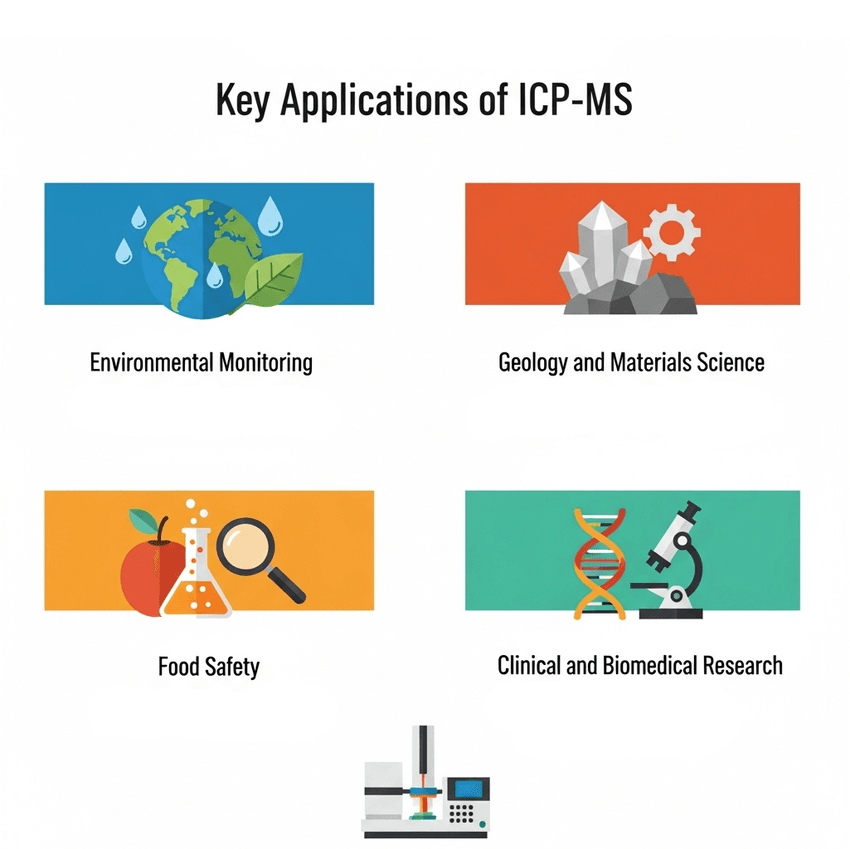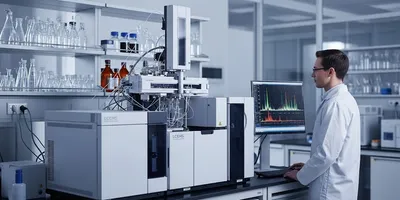In the fast-paced world of analytical chemistry, the demand for greater sensitivity, specificity, and efficiency is constant. As sample matrices become more complex and detection limits push into the parts-per-trillion range, traditional single-technique methods often fall short. This is where "hyphenated" techniques—the powerful combination of two or more complementary analytical methods—have become indispensable. By linking a separation technique directly to a detection technique, these integrated systems unlock a new level of analytical power, allowing lab professionals to achieve unprecedented results.
For modern laboratory professionals, understanding the principles and applications of these hyphenated systems is not just an advantage; it's a necessity. They are the workhorses of fields ranging from drug discovery and environmental monitoring to forensic science and food safety. This article will provide a comprehensive overview of three of the most common and impactful hyphenated techniques: LC-MS, GC-MS, and ICP-MS, helping you to grasp the fundamental principles that make them so revolutionary.
What is LC-MS?
LC-MS, or Liquid Chromatography-Mass Spectrometry, is a powerful analytical method that combines the separation power of Liquid Chromatography (LC) with the qualitative and quantitative capabilities of Mass Spectrometry (MS). This synergy allows for the separation of a complex mixture into its individual components, followed by the identification and quantification of each component based on its mass-to-charge ratio. It is a cornerstone of modern analytical science, particularly for analyzing non-volatile, thermally labile, or high-molecular-weight compounds.
The process begins in the liquid chromatograph. A liquid mobile phase carries the sample through a column packed with a stationary phase. As the sample travels, its components partition between the mobile and stationary phases at different rates. This differential migration leads to their separation, with each component exiting the column at a specific time, known as its retention time. The strength of LC lies in its ability to separate a wide array of compounds, from small molecules to large biological macromolecules like proteins.
After separation, the components are introduced into the Mass Spectrometer. This is where the "hyphen" comes into play, as the LC effluent is seamlessly interfaced with the MS. The interface’s primary role is to ionize the separated compounds without losing chromatographic resolution. Common ionization techniques include Electrospray Ionization (ESI) and Atmospheric Pressure Chemical Ionization (APCI). These soft ionization methods are crucial because they produce intact molecular ions, allowing for the analysis of fragile or non-volatile molecules that would not survive in a gas phase.
Once ionized, the ions are directed into the mass analyzer. Here, they are separated based on their unique mass-to-charge (m/z) ratio. The mass analyzer then sends the ions to a detector, which measures the abundance of each ion. The output is a mass spectrum—a plot of ion abundance versus m/z—which serves as a molecular fingerprint for the compound. By combining the retention time from the LC with the mass spectrum from the MS, lab professionals can confidently identify and quantify target analytes, even in highly complex mixtures.
Lab Management Certificate
The Lab Management certificate is more than training—it’s a professional advantage.
Gain critical skills and IACET-approved CEUs that make a measurable difference.
Key Applications of LC-MS:
- Pharmaceuticals: LC-MS is vital for drug discovery, metabolism studies, and quality control. It can identify and quantify active pharmaceutical ingredients (APIs), impurities, and degradation products.
- Proteomics and Metabolomics: In life sciences, it's used to identify and quantify proteins and small-molecule metabolites in biological samples, providing critical insights into biological pathways and disease states.
- Environmental Analysis: LC-MS is the go-to technique for detecting and measuring trace levels of contaminants like pesticides, herbicides, and emerging pollutants in water, soil, and food.
- Forensic Toxicology: It's used to screen for and confirm the presence of drugs of abuse, therapeutic drugs, and their metabolites in biological fluids.
- Food and Beverage Industry: It helps to detect food allergens, contaminants, and ensure the authenticity of food products.
The versatility and high performance of LC-MS make it a workhorse for any lab dealing with a diverse range of non-volatile and semi-volatile organic compounds.
What is GC-MS?
GC-MS, or Gas Chromatography-Mass Spectrometry, is the complementary hyphenated technique to LC-MS, but it is specifically designed for the analysis of volatile and semi-volatile organic compounds. By coupling the high-resolution separation of Gas Chromatography (GC) with the definitive identification of Mass Spectrometry (MS), GC-MS provides a robust solution for a wide range of analytical challenges.
The process begins in the gas chromatograph, where a gaseous mobile phase (typically an inert gas like helium or nitrogen) carries the vaporized sample through a heated column. The column is coated with a stationary phase, and as the compounds in the sample interact with it, they travel at different speeds. Compounds with lower boiling points and less affinity for the stationary phase move faster, exiting the column first. This differential movement separates the mixture into its individual components.
As each separated component exits the GC column, it enters the Mass Spectrometer through a heated interface. Unlike LC-MS, the compounds are already in the gas phase. In the MS, the compounds are subjected to high-energy electron bombardment in an ion source (most commonly Electron Ionization, or EI). This process fragments the molecules into a unique pattern of smaller, charged ions.
The resulting ions are then accelerated into a mass analyzer, which separates them based on their mass-to-charge (m/z) ratio. This separation creates a distinct fragmentation pattern, or a "mass spectrum," that is highly reproducible for a given compound. This fragmentation pattern is so specific that it acts as a unique chemical fingerprint, allowing for confident identification by comparing it to vast libraries of known compounds.
Key Applications of GC-MS:
- Forensics and Toxicology: GC-MS is a gold standard for drug detection in biological samples and for analyzing fire debris to identify accelerants. Its ability to create unique fingerprints makes it ideal for forensic investigations.
- Environmental Analysis: It's used to monitor for volatile organic compounds (VOCs) in air and water, as well as to detect pesticides and other contaminants in soil.
- Food and Flavor Chemistry: GC-MS is critical for analyzing flavor and aroma compounds in food and beverages, helping to ensure quality and authenticity.
- Petroleum and Petrochemical Industry: It's used to analyze the composition of fuels and crude oil.
The primary distinction between LC-MS and GC-MS is the nature of the samples they can handle: GC-MS requires samples that are volatile and thermally stable, while LC-MS is ideal for compounds that are not. Together, they provide comprehensive coverage for a vast range of organic analysis needs.
What is ICP-MS?
While LC-MS and GC-MS are designed for the analysis of organic molecules, ICP-MS, or Inductively Coupled Plasma-Mass Spectrometry, is a powerful and highly sensitive technique used for elemental analysis. It allows for the detection and quantification of virtually all elements on the periodic table, from trace levels to major components, in a wide variety of sample matrices.
The system's first stage is the Inductively Coupled Plasma (ICP) torch. An argon gas stream is passed through a quartz torch and subjected to a radiofrequency (RF) field, creating a high-temperature plasma—a superheated, ionized gas. This plasma, which can reach temperatures of 6,000–10,000 K, is hot enough to atomize and ionize a liquid sample introduced as a fine aerosol. The sample is completely decomposed into its constituent elements, which are then ionized.
The "hyphen" in ICP-MS connects the plasma to the mass spectrometer. The ions generated by the ICP torch are extracted from the plasma and directed into the mass analyzer, which is held under a high vacuum. This vacuum is crucial to prevent the ions from colliding with gas molecules and to ensure their smooth passage to the detector.
Similar to the MS in LC-MS and GC-MS, the mass analyzer in ICP-MS separates the ions based on their mass-to-charge (m/z) ratio. Since most elements are singly charged in the plasma, their m/z ratio is essentially equal to their mass. The detector then measures the abundance of each ion, creating a signal that is proportional to the concentration of that element in the original sample. This allows for incredibly low detection limits, often in the parts-per-billion (ppb) or even parts-per-trillion (ppt) range.

ICP-MS has a variety of uses across different fields.
GEMINI (2025)
Key Applications of ICP-MS:
- Environmental Monitoring: ICP-MS is the primary technique for testing drinking water for heavy metals like lead, arsenic, and mercury, as well as for analyzing soil and sediment for pollutants.
- Geology and Materials Science: It's used to determine the elemental composition of rocks, minerals, and advanced materials, providing clues about their formation and properties.
- Food Safety: It ensures the safety of food products by screening for heavy metal contaminants.
- Clinical and Biomedical Research: ICP-MS is increasingly used to measure elemental levels in biological fluids, which can be indicators of disease or nutritional deficiencies.
ICP-MS stands out from its organic analysis counterparts by focusing on the elemental composition of a sample rather than its molecular structure. This makes it an essential tool for any lab concerned with the inorganic world.
The Power of Integration: How Hyphenated Techniques Redefine Your Lab
The power of hyphenated techniques lies in their ability to combine two or more separate steps into a single, automated workflow. This integration offers numerous advantages:
- Enhanced Specificity and Sensitivity: By combining a separation technique with a highly sensitive detector like a mass spectrometer, these systems can identify and quantify target analytes at far lower concentrations than single techniques alone.
- Reduced Sample Preparation: The integrated nature of these systems often simplifies the sample preparation process, as a single injection can provide a wealth of information that would otherwise require multiple analyses.
- Increased Efficiency and Throughput: Automation of the separation and detection process significantly reduces analysis time, allowing for higher sample throughput.
- Unambiguous Results: The ability to combine chromatographic retention time with a molecular fingerprint from MS provides a high degree of confidence in the identification of a compound, minimizing false positives.
For laboratory professionals, mastering these techniques is about embracing a new paradigm of analytical chemistry—one where complexity is met with a powerful, multidimensional approach. From organic molecules to inorganic elements, LC-MS, GC-MS, and ICP-MS are the essential tools for solving the most demanding analytical challenges of today and tomorrow.
FAQ on Hyphenated Techniques
What is the primary difference between LC-MS and GC-MS?
The main difference lies in the type of compounds they are suited to analyze. LC-MS is used for non-volatile, thermally unstable, and larger organic molecules, while GC-MS is for volatile or semi-volatile, thermally stable compounds.
Why are these techniques called "hyphenated"?
They are called "hyphenated" because they directly link or "hyphenate" two distinct analytical techniques. The separation method (LC, GC, or ICP) is coupled with a detection method (MS) to provide a more powerful and comprehensive analysis than either technique could offer on its own.
Can LC-MS, GC-MS, and ICP-MS be used to analyze the same sample?
Not typically. They are designed for different types of analytes. You would use LC-MS for drug metabolites, GC-MS for flavors in an essential oil, and ICP-MS for heavy metals in soil. A single lab might use all three, but for different analytical questions and different sample preparations.












